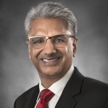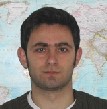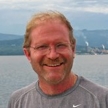PDL CONSORTIUM SPEAKER SERIES
A SERIES OF SPECIAL SDI TALKS BY
PDL CONSORTIUM VISITORS
DATE: Tuesday, June 23 and Wednesday, June 24, 2020
TIME: see times below
PLACE: find zoom links in email to sdi-list
SPEAKERS: Tuesday June 23, 2020
| 4:30 pm - 5:15 pm | Big Memory through Virtual Cluster Memory Marcos K. Aguilera, Senior Staff Researcher, VMware |
| 5:15 pm - 6:00 pm | Experience using RDMA in Oracle Database Namrata Jampani, Principal Member of Technical Staff, Oracle |
| 6:00 pm - 6:45 pm |
Workload-optimized SSDs Pankaj Mehra, VP of Product Planning, Samsung Electronics |
SPEAKERS: Wednesday June 24, 2020
| Noon - 12:30 pm | Adapting Technology Development for the IT4.0 Datashpere Paul Kusbel, Senior Director, Seagate Research Group |
| 12:30 pm - 1:15 pm | Operationalising ML is Mostly a Systems Problem Eno Thereska, Principal Engineer, Amazon |
| 1:15 pm - 2:00 pm | Improving Hypervisor Security Carlo Bertolli, Research Staff Member and Manager, IBM |
| 2:00 pm - 2:30 pm | Zoned Namespaces: Take Control of Your Data Matias Bjørling, Director, Emerging System Architectures, Western Digital |
| 2:30pm - 3:00 pm | break |
| 3:00 pm - 3:45 pm |
Metastable Failure States in Distributed Systems Nathan Bronson, Software Engineer, Facebook |
| 3:45 pm - 4:30 pm |
Advancements in Integrating Application Caves Garret Swart, Oracle |
| 4:30 pm - 5:30 pm | Mind Your State for Your State of Mind Pat Helland, Principal Architect, Salesforce |
 SPEAKER: Marcos K. Aguilera, Senior Staff Researcher, VMware
SPEAKER: Marcos K. Aguilera, Senior Staff Researcher, VMware
Big Memory through Virtual Cluster Memory
Applications must process an ever increasing amount of Big Data. As Big Data moves to memory, we need systems with Big Memory. In this talk, I will describe the design and research challenges of VMware's Virtual Cluster Memory, a solution that provides VMs with Big Memory using a fully transparent software implementation of disaggregated memory.
BIO: Marcos joined VMware in 2014. Prior to that, he was a researcher at Microsoft Research Silicon Valley, HP Labs, and Compaq's Systems Research Center. Marcos earned a PhD in Computer Science from Cornell University, and did his undergraduate work at Universidade Estadual de Campinas in Brazil.
 SPEAKER: Namrata Jampani, Principal Member of Technical Staff, Oracle
SPEAKER: Namrata Jampani, Principal Member of Technical Staff, Oracle
Experience using RDMA in Oracle Database
Performance of many distributed algorithms and features in the Oracle database is being improved by leveraging the advancements in RDMA technology. Transaction commit performance has been improved by using an RDMA based algorithm to broadcast the commit SCN to the remote instances in a cluster. We have also developed an RDMA based low latency distributed locking service that supports shared and exclusive mode cluster-wide locking. This is being used to address the scalability and availability issues with Oracle database's traditional Distributed Lock Manager which is a messaged based service. We are working on migrating Oracle's Ordered Sequences and Buffer Cache to use RDMA based locks. In this talk, we are going to describe how we implemented Broadcast on Commit and Ordered Sequences using RDMA primitives and share our experience in using RDMA in the Oracle Database.
BIO: Namrata is a Principal Member of Technical Staff at Oracle USA. She works in the Virtual Operating System group in the Oracle Database product development. Her research interests lie in Distributed Computing and Networking using RDMA. Namrata is working on improving the performance and availablility of key database algorithms (locking, cache fusion) in the Oracle clustered database product. Her work also includes enhancing the communication performance of Oracle database on Exadata, a flagship engineered system designed to run Oracle databases efficiently, by using newer hardware primitives available on Infiniband network such as RDMA transfers and Atomic primitives. Namrata holds a Masters degree in Computer Science from Cornell University, USA and a Bachelors degree in Computer Science from Indian Institute of Technology Hyderabad, India.
 SPEAKER: Pankaj Mehra, VP of Product Planning, Samsung Electronics
SPEAKER: Pankaj Mehra, VP of Product Planning, Samsung Electronics
Workload-optimized SSDs
Today's datacenters and data lake sizes call for re-imagining traditional storage systems to increase efficiency and scalability. New, data-centric approaches avoid redundant address translations, minimize protocol terminations, and act as intelligent storage subsystems. Examples of these technologies will include discussion of Ethernet-attached SSDs, Computational Storage, and Zoned Namespaces.
BIO: Pankaj Mehra is VP of Product Planning at Samsung Electronics where he leads the Storage Pathfinding team at Device Solutions America. Pankaj was previously VP and Senior Fellow at SanDisk and WD, and WW CTO of Fusion-io. He was previously an HP Distinguished Technologist. Pankaj's 3 books and more than 50 papers and patents span the gamut from machine learning and context aware computing to systems, storage and networking.
 SPEAKER: Paul Kusbel Senior Director, Seagate Research Group
SPEAKER: Paul Kusbel Senior Director, Seagate Research Group
Adapting Technology Development for the IT4.0 Datashpere
In this presentation we will look at Seagate's view of the evolving datasphere as we transition into the world of IT4.0. We will cover the transformation of Seagate's research team to address the changing technology needs driven by the IT4.0 data lifecycle. In closing we will address key technology vectors that the Seagate Research team is pursuing.
BIO: Paul Kusbel is a Senior Director of Research for Seagate Technology. He is responsible for leading the data flow pillar of research. The team studies how data is created, transported, and consumed throughout the datasphere with the goal of understanding imminent innovations in the industry as well as identifying opportunities for Seagate to influence future innovations. Paul has more than 25 years of experience in the storage industry with Magnetic Peripherals, Control Data, Imprimis, and Seagate. His background includes electrical design and architecture, systems engineering, signal processing, channel development, program management, and most recently storage systems research. Paul has a bachelor of science in electrical engineering from Oklahoma State University.
 SPEAKER: Eno Thereska, Principal Engineer, Amazon
SPEAKER: Eno Thereska, Principal Engineer, Amazon
Operationalising ML is Mostly a Systems Problem
Deploying and maintaining machine learning (ML) in production requires a lot of manual work and a large team of scientists and engineers. This talk first describes today's pain points in operationalising distributed ML pipelines. We then make the case that there is a principled way to automate away most of the pain through a framework that, at least at a high level, looks like a distributed operating system. We present early thoughts on the IO, storage and compute model for such an OS, as well as ways to test and debug it.
BIO: I am a Principal Engineer at Amazon (AWS). Previously, I was a Member of Technical Staff at Confluent working on Apache Kafka and before that I was a Senior Researcher at Microsoft Research. I have broad interests in computer systems and enjoy the full spectrum of work from academic research to shipping and operationalizing real products. I received my PhD from Carnegie Mellon (ex-PDL!).
 SPEAKER: Carlo Bertolli, Research Staff Member and Manager, IBM
SPEAKER: Carlo Bertolli, Research Staff Member and Manager, IBM
Improving Hypervisor Security
Hypervisors are the backbone of current virtual machine (VM) based Clouds, as they enable VM booting, device abstraction and sharing, as well as hardware virtualization support. They are also projected to play a central role on next generation container environments for security, by supporting micro virtual machine (microVM) technologies. In either case, security and performance of the hypervisor is at the center of the state of the art research in Cloud infrastructure. The most critical hypervisor software component is the virtual machine monitor (VMM), a user-space process that can access the largest amount of kernel APIs and has direct control over devices and their drivers. Because of its central role, any system is as safe as the deployed VMM. VMM projects include the widely used standard Qemu, which can also act as operating system emulator, and more recent efforts based on the Rust language, such as Firecraker, Cloud Hypervisor, and CrosVM. The goal of Qemu is generality, i.e. the ability to support any type of hardware platform, including legacy devices for backward compatibility. Rust-based VMMs rely on the base language security properties to claim improved security, as compared to Qemu, which is developed in C. In some cases (e.g. Firecraker) they target high performance (start up time, density) for a reduced class of applications (serverless) and only on specific hardware platforms. In this talk we will start by showing how Qemu is modularized and configurable to deliver a reduced runtime surface of attack. With these mechanisms, we will show how it can be customized to a specific Cloud hardware platform and what is the impact on the attack surface and how this compares to Rust-based VMMs. We will then show that further reduction is possible, by analyzing coverage traces on realistic Cloud workloads. Our conclusion is a set of compile- and run-time mechanisms that can be used to deploy a minimal Qemu to a production-level Cloud infrastructure.
BIO: Carlo Bertolli is Research Staff Member and Manager at IBM T.J. Watson Research Center. His experience is in the area of high performance computing and cloud computing, including: performance portability of OpenMP and domain specific languages for fluid dynamic simulations on CPU and GPU; acceleration via 3D memory stacking; security in cloud computing. In the past, he has been technical leader for the Clang/LLVM OpenMP compiler for Summit and Sierra, and main developer of the OP2 framework.
 SPEAKER: Matias Bjørling, Director, Emerging System Architectures,
SPEAKER: Matias Bjørling, Director, Emerging System Architectures,
Western Digital
Zoned Namespaces: Take Control of Your Data
The global hunger for more storage capacity requires us to rethink conventional storage interfaces that we use in today's storage infrastructures. SSDs that implements the Zoned Namespace (ZNS) Command Set specification can expose more than 20% more of its media, requires an order of magnitude less device DRAM, while also improving I/O tail latencies. We introduce the NVMe Zoned Namespace Command Set, potential architecture implementations, and its benefits. ZNS SSDs significantly lowers the barriers for research on SSDs, as they no longer can be considered black boxes, its behavior is close to accessing the media directly, with little overhead. Thereby enabling one to logically reason about performance of the SSDs and benefits of ones research.
BIO: Matias is a Director of Emerging System Architectures at Western Digital. He and his team are building next-generation storage architectures that target hyper-scalers and large-scale private data-centers.
 SPEAKER: Nathan Bronson, Software Engineer, Facebook
SPEAKER: Nathan Bronson, Software Engineer, Facebook
Metastable Failure States in Distributed Systems
Metastable failure states are feedback loops that can turn a small temporary failure into total system unavailability. Surprisingly, efficiency and reliability work has a tendency to create these loops rather than fix them. In this talk we'll give some intuitions for where the feedback loops come from, and a range of techniques we use at Facebook to keep them (mostly) under control.
BIO: Nathan is a software engineer in Facebook's Boston office. He is currently focused on distributed systems consistency, but is interested in anything where both the big-O and the constant factors matter. Nathan was an early engineer on TAO, and continues to work on the online social graph serving ecosystem. He got his PhD at Stanford advised by Kunle Olukotun, working on single-machine concurrent programming models.
 SPEAKER: Garret Swart, Oracle
SPEAKER: Garret Swart, Oracle
Advancements in Integrating Application Caves
One of Plato's contributions to information theory is his allegory of the cave whose inhabitants perceive reality as flickering shadows reflected on the cave's wall. In modern IT, applications inhabit different caves, where they have been painstakingly taught to interpret and manipulate the data flickering on their walls. With so many caves, the difficulty is not just sharing data, but interpreting the data across caves. It is common practice for inter-cave communication to be mediated by disparate processes that convert data from one cave's representation to another's, leading to systems that are inefficient, difficult to understand and hard to keep working correctly. In this talk, we explore these caves and show how advances in multi-model declarative programming and autonomous processing are making it easier for the caves to share information. We will explore how caves represent information in relational, document, graph, vector, and geo models; how the relationships between these models are expressed; how applications want information to be evaluated, manipulated, retained and secured; and how we are making progress on the autonomous application of compression, encryption, caching, transformation, materialization, storage and replication.
BIO: Garret Swart is an architect in the Database group at Oracle and before Oracle, he worked in research labs, start ups, and university. Garret earned his PhD from University of Washington and ScB from Brown University.
 SPEAKER: Pat Helland, Principal Architect, Salesforce
SPEAKER: Pat Helland, Principal Architect, Salesforce
Mind Your State for Your State of Mind
Applications have had an interesting evolution as they have moved into the distributed and scalable world. Similarly, storage and its cousin databases have changed side by side with applications. Many times, the semantics, performance, and failure models of storage and applications do a subtle dance as they change in support of changing business requirements and environmental challenges. Different types of distributed stores offer various average speeds, variation in responsiveness, capacity, availability, and durability. This talk provides a partial taxonomy of diverse storage solutions available over a distributed cluster. Part of this is an exploration of the interactions among different features of a store. The talk then considers how distinct application patterns have grown over time to leverage these stores and the business requirements they meet. It concludes with a set of actionable takeaways.
BIO: Pat Helland has been implementing transaction systems, databases, application platforms, distributed systems, fault-tolerant systems, and messaging systems since 1978. For recreation, he occasionally writes technical papers. He currently works at Salesforce.
SDI / ISTC SEMINAR QUESTIONS?
Karen Lindenfelser, 86716, or visit www.pdl.cmu.edu/SDI/
